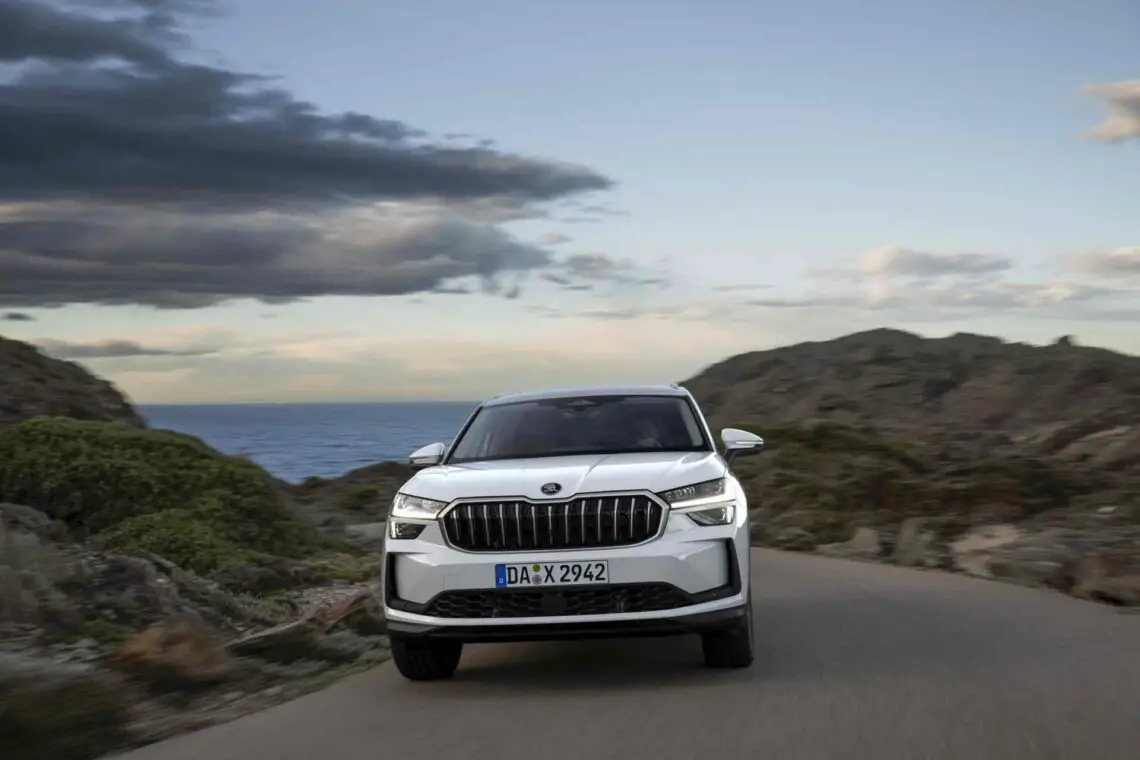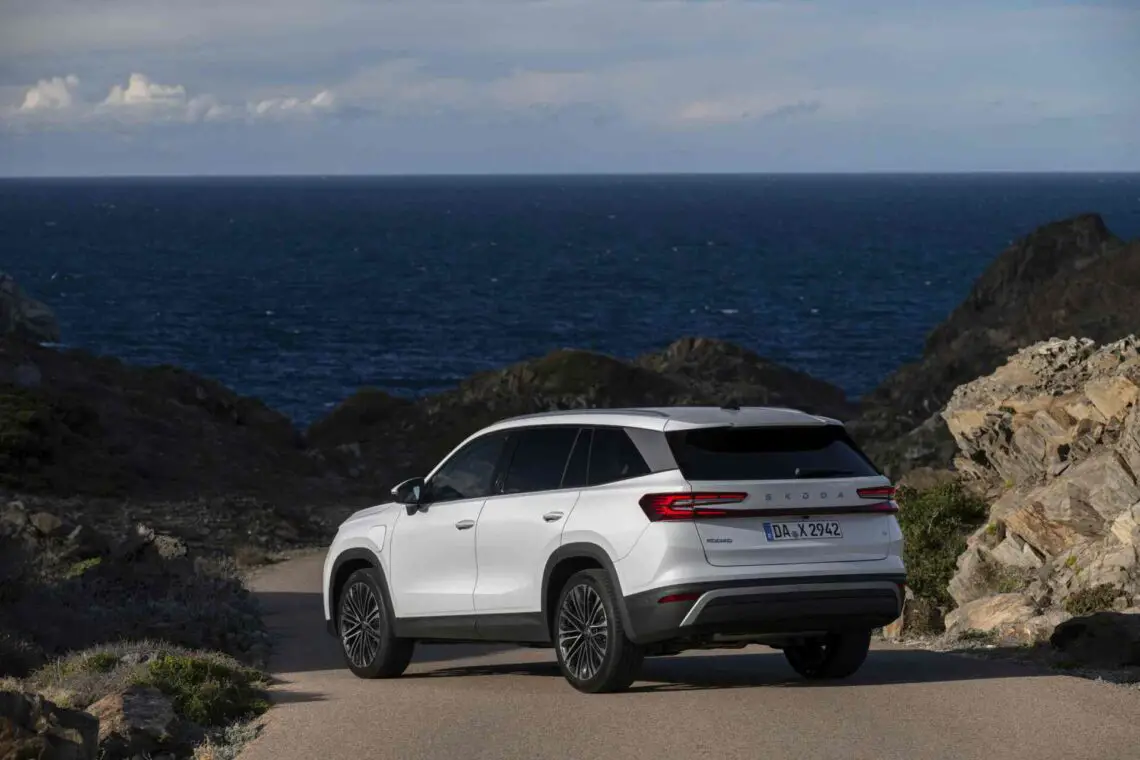Review – Skoda Kodiaq (2024) – The perfect family SUV?
Skoda Kodiaq
In the world of SUVs, the first generation Kodiaq made a huge impact, where space and comfort went hand in hand. Yet one thing was missing: a fuel-efficient hybrid powertrain. With the arrival of the second-generation Kodiaq, that has changed. All the variants that roll into our chilly country are partially electrified.
Smooth enough
You have a choice between a mild-hybrid powertrain or a powerful plug-in hybrid variant. The mild-hybrid Kodiaq is equipped with a 1.5-liter gasoline engine assisted by a compact electric motor, which provides additional support during acceleration. This powertrain produces 150 horsepower. The powertrain is strong enough to get the big SUV off the road smoothly enough, but you shouldn’t be in a hurry. For the flat Netherlands, where speed bumps are the only “mountains,” this powertrain suffices just fine, but when you have to cross the Alps with 7 passengers, or with 5 passengers and a full luggage compartment, plus a caravan of up to 1,800 kg (the maximum towing weight), things can get tricky.

Kodiaq Plug-in Hybrid
The PHEV offers considerably more power, at 204 hp. The plug-in Kodiaq has the same 1.5-liter gasoline engine under the hood, but adds a much larger electric motor. This electric motor provides instant torque, making the PHEV – similar to an electric car – accelerate smoothly and smoothly. But there is more to why we prefer the PHEV to the MHEV (mild-hybrid). In fact, the plug-in Kodiaq also has an impressive electric range of 100 kilometers. This allows you to drive electric practically all year round within the Netherlands, unless you really drive a lot of miles. In that case, you can look for a fast charger, as the PHEV can charge up to 50 kW.

Less luggage space
The PHEV configuration does come at the slight expense of luggage space and the possibility of a third row of seats. Only the mild-hybrid Kodiaq seats seven. By the way, with over 700 liters of luggage space, the PHEV offers more than enough options for daily use. However, the MHEV is the space king, with over 900 liters of luggage space.

Recognizable design
Now that we have discussed the technical and practical issues, what about the design? Although the exterior design of the new Kodiaq still builds somewhat on that of its predecessor, it exudes a modern look with sharp lines and eye-catching details that attract attention. Consider the “dual” headlights and the continuous LED strip in the grille. At the rear, the C-shaped lighting stands out, connected by a fashionable plastic strip. The new Kodiaq is a few inches lower than its predecessor, making it look a bit sportier. It does not come at the expense of interior space, as even tall people have ample headroom in all seats.

Top model
Inside, you notice that the Kodiaq – perhaps even more than the Superb – is the brand’s flagship model. In the version we are scrutinizing, every surface appears to be covered with soft alcantara, creating a sense of exclusivity. The impressive 13-inch infotainment screen offers not only a wealth of features but also smooth performance, allowing you to effortlessly swipe through the various menus. And let’s not forget the smart Smart Dials, which we saw for the first time in the new Superb and allow you to adjust climate control, seat heating and ventilation speed with just one turn and press of a button, without having to turn your attention away from the road.

Conclusion
The latest Kodiaq has everything a large Dutch family needs. The mild-hybrid version provides enough power for daily commutes, but we would still opt for the PHEV because of its better performance without the price tag being much higher. Although we currently only know the prices of the mild-hybrid, which starts at 44,990 euros, we suspect that the PHEV will be only two to three thousand euros more expensive. With an extra month or two of savings, you get considerably more driving pleasure and comfort in return. In the video below, we tell you all about the Kodiaq’s handling and the differences between the two powertrains:

